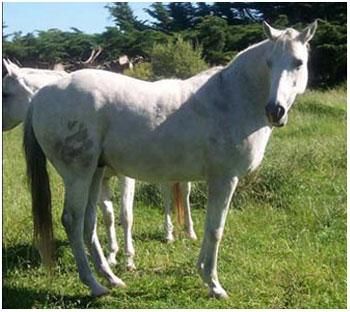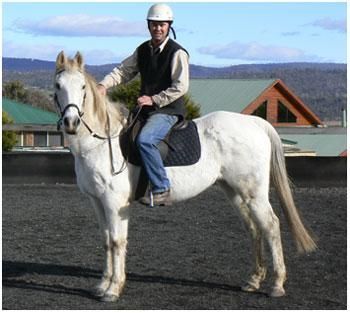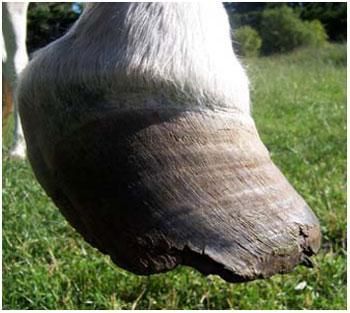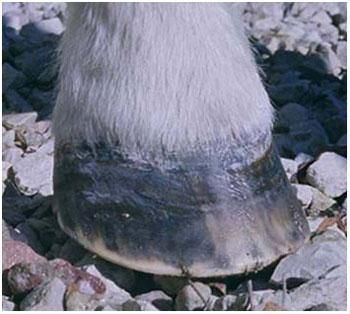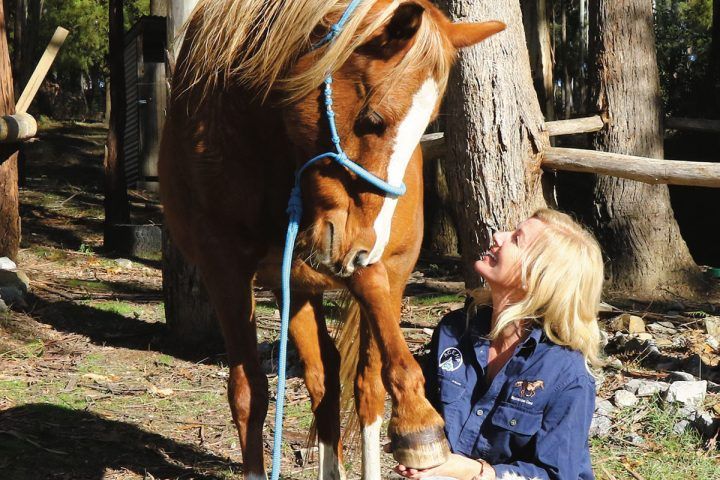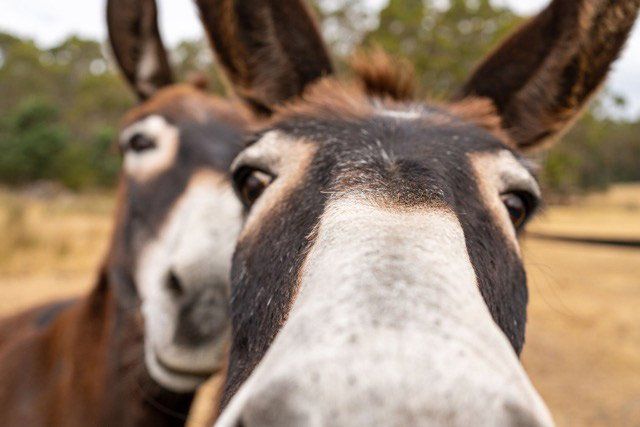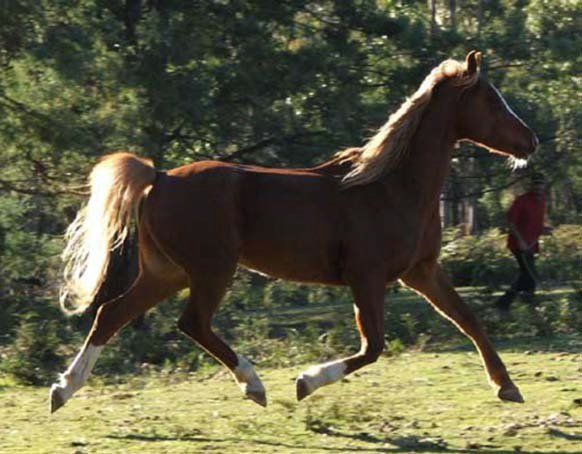THE FOUNDER FACTS
Laminitis kills thousands of horses every year, and leaves thousands of others debilitated with lameness.
It will and can affect any horse.
And for you, the horse owner it can be devastating: you feel guilty and heartbroken at your horses suffering, confused with all the information as it is typically explained by professionals in scientific terms that can be difficult to understand, costly veterinary bills and you have the major task of nursing your horse back to recovery. .
Unseasonal weather patterns around Australia with abundant rain and sunshine saw laminitis at a near epidemic last year. The reason being, that the environmental conditions can trigger increases in the sugar, starch and fructan. These collectively known as non-structural carbohydrates can cause laminitis in any horse or pony.
Alarm bells ring this spring!!
Be warned and be prepared, for prevention is better than cure.
What Is Laminitis?
In a healthy horse, the coffin bone inside the hoof is attached to the wall by tough laminae. These are like Velcro. One part stuck to the bone and one part stuck to the hoof capsule.
Laminitis, in very simple terms, is the poisoning or inflammation of this ‘velcro’ (laminae). It results in the failure of the attachment between the bone and the hoof wall.
In an acute case, the bone tears away from the hoof wall and is driven down inside the hoof capsule by the full weight of the horse. This is referred to as pedal bone rotation.
The Problem with It?
It is the most serious disease of the equine hoof and causes pathological changes in the horse’s anatomy that may lead to long lasting lameness.
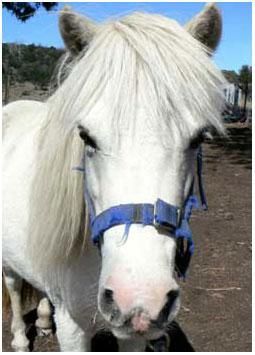
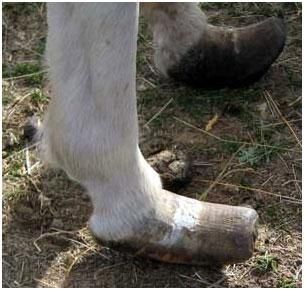
This is molly a five yr old Welsh/sheltland mare. She has the classic slipper toe identified with long-term neglect and founder. With correct hoof care, she was able to move off in a normal gait, and then cantered off to join her herd. Her hooves look normal again. Molly was fortunate to be rehabilitated from her founder episode. Founder is the long-term result of laminitis.
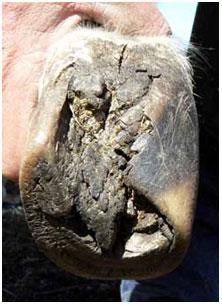
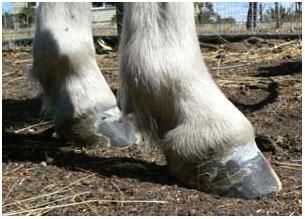
What Causes Laminitis?
- Pasture high in sugars – even skinny horses, and horses in work can get laminitis on grass that is high in sugar. The sugar in pasture varies seasonally i.e. spring or autumn flushes; throughout the day by photosynthesis; climatically i.e. drought or frost; and through management of pasture i.e. fertilizers
- Over feeding grain – all horses can get laminitis from overfeeding or feeding products too high in non structural carbohydrates (NTSC’s), starch and protein in addition to pasture and hay. Horses that “break in” and gorge on grain can develop laminitis rapidly.
- Obesity - and its metabolic consequences is one of the major causes of laminitis. Thinking your obese horse is safe is like a ticking bomb!
- Fat horses can become Insulin Resistant (IR), which is a condition similar to Type 2 diabetes in humans. These horses are extremely susceptible to laminitis – even carrots and apples can make them founder – and sometimes these horses cannot be put on grass at all. This is extremely common. www.ecirhorse.com
- Cushing’s disease – a tumor of the pituitary gland – Found often with elderly, IR or obese horses. Horses that develop this are extremely susceptible to laminitis. www.ecirhorse.com
- Retained placenta post foaling- can induce laminitis
- Supporting limb laminitis - can develop when your horse has injured one leg and loads weight for long periods of time without movement on the other uninjured leg.
- Mechanical - when the horse is subjected to hard work on often-compromised hooves (overgrown, unbalanced). Also called Road Founder or concussive founder.
- Stress – excessive travelling, competing, overtraining, illness, medications, post colic attack or post surgery can all trigger laminitis attack.
Signs to Look For
- Reluctance to move freely – horse is accused of being lazy, is “ouchy” on rocks “walking on egg shells”, is worse when asked to turn or walk down hill
- Bounding Digital pulse – indicates hoof inflammation. The digital pulse can be felt in the artery behind the fetlock.
- Heat in the hooves
- Shifting weight from hoof to hoof /swaying side to side
- Horse appears restless or may lie down a lot
- Blood (stain) visible in white line of the hoof sole – usually seen by your farrier or trimmer a couple of weeks after an attack
- Horse stands depressed, unwilling to move
- Horse unwilling/unable to pick up a foot
- If your horse has been mildly laminitic for some time, the hooves will look distorted, rings are present in the hoof wall, hooves may be flared, have separation in the white line of the hoof and thin flat soles. These horses often have cracks and seedy toe infection.
- Overweight laminitic prone horses will often show a cresty neck and fat cellulite deposits on their body.
Unfortunately most horse owners don’t realize when their horse is in the developmental stages of laminitis. Severe damage to the internal anatomy can occur out of sight within the space of a few hours.
Fortunately horses have an incredible potential for healing. If the cause of laminitis is removed and ideal conditions of recovery and health are provided they will nearly always heal.
A management plan is necessary if you have a laminitic horse in your care.
- remove the horse from the cause,
- first aid and pain relief. Seek veterinary advice.
- The horses environment – make it comfortable and with companions
- Feeding and nutrition – keep it simple. Soak hay to remove sugars. Strip graze or use a muzzle to reduce grass intake
- regular and rehabilitative Hoof care
- Regular exercise and movement
- Prevention
Knowing what causes laminitis, we have the power to prevent it.
Think about the horse – both wild and domestic.
To nurse your horse back to good health look at the big picture: your horses evolved needs. Today’s horse is highly evolved and its biological makeup allowed it to survive for millions of years.
This one fact is valuable to your understanding of laminitis. Horses have simple needs and more we complicate their lifestyles and feed, the more problems we have.
While it is difficult for us to adopt the nomadic wild horse lifestyle for our own horses – it is possible to incorporate a few of the “wild” elements into our husbandry that produce healthy, happy horses. Acknowledging this and making the necessary changes, the road to recovery will be a success.
The most rewarding thing is to see a foundered horse return to soundness.
More rewarding is knowing YOU made the difference
Case Study – Charlie the Superhero Shetland please click on the footage links to see before and after.
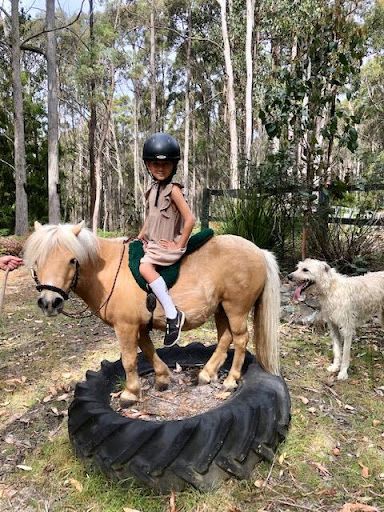
Footage of day one – he couldn't walk https://www.facebook.com/wild.abouthooves/videos/779752806625766/
Footage of returning to good health and rehomed to a equine assisted learning facility – he is sure to win more hearts there. https://www.facebook.com/wild.abouthooves/videos/187728624026044
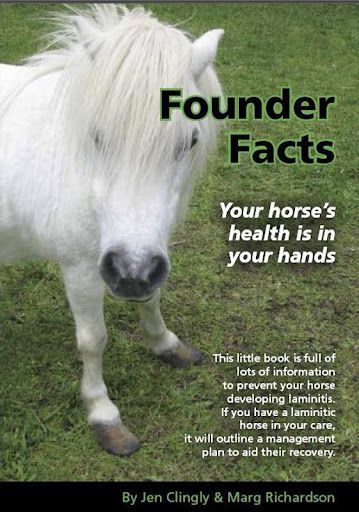
This Little Book Could Save Your Horses Life The Founder Facts – Your Horses Health Is in Your Hands
A little book with lots of information to prevent your horse developing laminitis. If you have a laminitic horse in your care, it will outline a management plan to aid their recovery.
Edited by the leader in laminitis research in Australia, Professor Chris Pollit this book contains up to date information and is a must have guide for all horse owners and professionals.
PREVENT LAMINITIS – BUY THE FOUNDER FACTS direct from
https://www.wildabouthooves.com.au/online-shop/THE-BARE-FACTS-AND-THE-FOUNDER-FACTS-BOOKLETS-p154026025
Rehabilitation case….
This is Charlie, he was to be euthanased. I found him lying on the ground. As you can see from the way he is standing in picture 1 he's not very comfortable and in a lot of pain. He was in a small grass paddock with grass and clover up to his knees hence the reason for his laminitis
